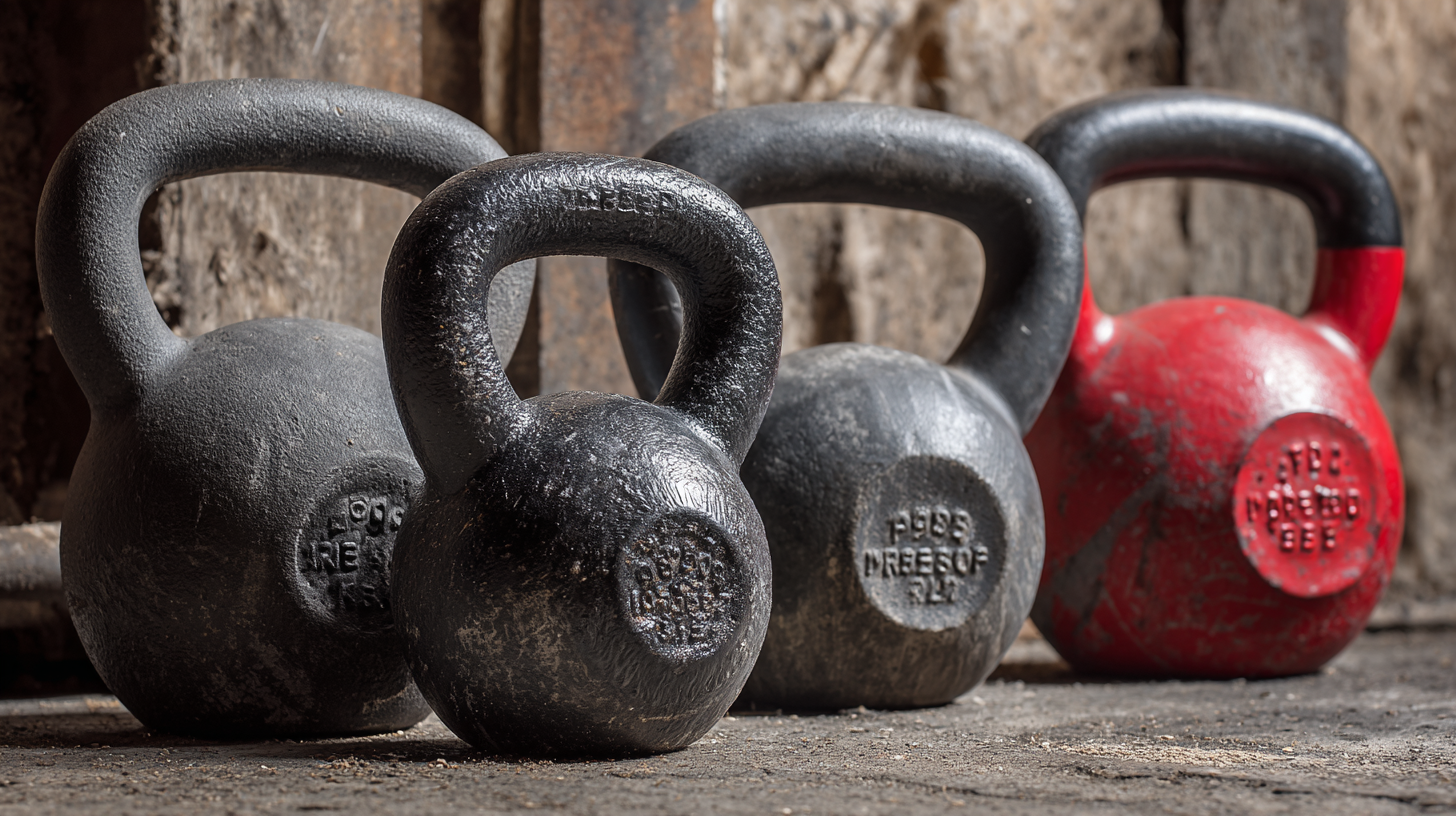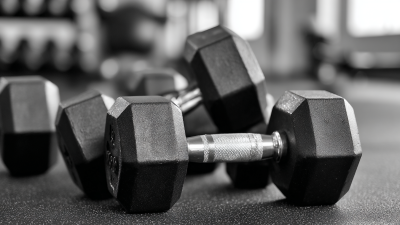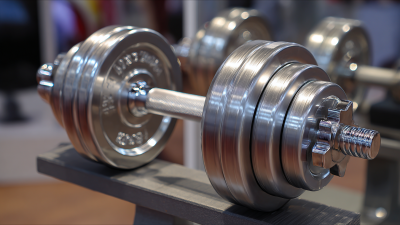In recent years, heavy kettlebell training has surged in popularity, becoming a cornerstone in strength and conditioning programs. According to a report by the National Strength and Conditioning Association, implementing kettlebell workouts can enhance functional strength by up to 30%, significantly improving athletic performance and reducing injury risk. Heavy kettlebell workouts not only build strength but also improve cardiovascular endurance, with research indicating that a single session can burn over 400 calories in just 30 minutes. With these compelling statistics, it's clear that heavy kettlebell training unlocks a wealth of physical benefits, making it an essential tool for fitness enthusiasts and athletes alike. This ultimate guide aims to delve deep into the methodologies of heavy kettlebell training, providing actionable tips and insights to maximize your strength potential today.

Heavy kettlebell training is an effective method for enhancing muscle activation and promoting growth. The unique design of kettlebells allows for dynamic movements that engage multiple muscle groups simultaneously. When lifting heavier weights, the body activates more motor units and muscle fibers, leading to greater overall strength development. This process not only improves muscle hypertrophy but also enhances neuromuscular efficiency, aiding in overall performance in various physical activities.
The science behind heavy kettlebell training lies in the principles of progressive overload and functional strength. By routinely increasing the weight or intensity of your workouts, you stimulate the muscles to adapt, becoming stronger and more resilient over time. Additionally, kettlebell exercises often require stabilization and coordination, which further contributes to muscle engagement. This multifaceted approach not only builds muscle but also enhances endurance, agility, and core stability, making heavy kettlebell training a comprehensive fitness solution that maximizes strength potential.
| Exercise | Primary Muscle Groups | Benefits | Recommended Sets & Reps |
|---|---|---|---|
| Kettlebell Swing | Hamstrings, Glutes, Core | Improves explosive power, enhances cardiovascular endurance | 3-5 sets of 12-15 reps |
| Turkish Get-Up | Shoulders, Core, Hips | Enhances stability, coordination, and overall strength | 3 sets of 5 reps per side |
| Goblet Squat | Quadriceps, Glutes, Core | Improves squat mechanics and strength | 4 sets of 8-12 reps |
| Kettlebell Deadlift | Hamstrings, Glutes, Lower Back | Builds posterior chain strength | 3-4 sets of 6-10 reps |
| Kettlebell Press | Shoulders, Triceps, Core | Increases shoulder strength and stability | 3-4 sets of 6-8 reps |
When it comes to heavy kettlebell training, safety should be your top priority. To prevent injuries, it’s essential to master the fundamental techniques before progressing to heavier weights. Start with the basic movements, such as the kettlebell swing, goblet squat, and Turkish get-up. Proper form is crucial; ensure that you engage your core and maintain a neutral spine throughout each exercise. Remember to focus on your grip and breathing, as these factors can significantly affect your stability and performance.
Incorporating mobility drills into your routine can further enhance your safety during heavy lifting. Stretching and dynamic warm-ups prepare your muscles for the demands of kettlebell exercises. Pay attention to your body mechanics, ensuring that your knees track over your toes in squats and that your shoulders remain aligned during presses. Lastly, consider using a lighter kettlebell to practice each movement until you feel confident in your technique. This approach not only minimizes the risk of injury but also maximizes your results, allowing you to gradually increase the weight and intensity of your training.
This chart illustrates the effectiveness of various kettlebell lifting techniques in improving strength over a 12-week training program. The data represents the percentage increase in the maximum weight lifted by participants using different techniques.
To maximize the benefits of heavy kettlebell training, it is essential to pair your workouts with effective nutrition strategies. Research shows that nutrition plays a critical role in an athlete's performance and recovery. A study conducted by the International Society of Sports Nutrition highlights that consuming an adequate amount of protein—between 1.6 to 2.2 grams per kilogram of body weight—can significantly enhance muscle repair and growth. Therefore, incorporating high-quality protein sources such as lean meats, eggs, and plant-based proteins is vital for those engaging in heavy kettlebell workouts.
In addition to adequate protein intake, timing your nutrition around exercise can optimize your training outcomes. The American College of Sports Medicine recommends consuming carbohydrates before and after workouts to replenish glycogen stores and ensure sustained energy levels. During periods of heavy training, athletes should aim for a carbohydrate intake of about 5-7 grams per kilogram of body weight per day. Combining these macronutrients effectively not only fuels your strength but also boosts your overall performance, helping you unlock your full kettlebell training potential.

Progression methods in heavy kettlebell workouts are essential for tracking improvements and avoiding plateaus. To effectively monitor progress, it is crucial to establish baseline metrics before diving into your training regimen. This includes recording the weights lifted, the number of repetitions, and the duration of workouts. By doing so, you create a clear starting point from which you can measure your growth. Regularly reassessing these metrics allows you to celebrate small victories and remain motivated as you advance.

Incorporating progressive overload is a fundamental strategy for enhancing strength through kettlebell training. This can be achieved by gradually increasing the weight of the kettlebells, adding more repetitions, or extending workout duration, ensuring that you consistently challenge your muscles. Additionally, varying exercises can prevent boredom and stimulate different muscle groups, promoting overall development. To avoid plateaus, it’s essential to cycle through different training phases, such as focusing on strength, endurance, or skill-based movements. This strategic approach not only keeps your workouts fresh but also maximizes your strength potential over time.
Recovery is a crucial aspect of heavy kettlebell training, often underestimated by athletes and fitness enthusiasts alike. When lifting heavy, the body undergoes significant stress, and it is during the recovery phase that muscle repair and growth occur. Adequate rest allows the nervous system to recover, ensuring that strength gains are maximized and the risk of injury is minimized. Incorporating rest days into your training schedule not only revitalizes muscle fibers but also helps maintain mental focus and motivation.
Additionally, the role of active recovery cannot be overlooked. Engaging in light physical activities, such as yoga or brisk walking, on rest days can enhance blood flow and facilitate the removal of metabolic waste products from the muscles. Proper nutrition and hydration during recovery periods are also vital, as they provide the necessary building blocks for muscle repair and energy replenishment. By prioritizing recovery in your heavy kettlebell training regimen, you set the foundation for improved performance and long-term success in achieving your strength goals.






